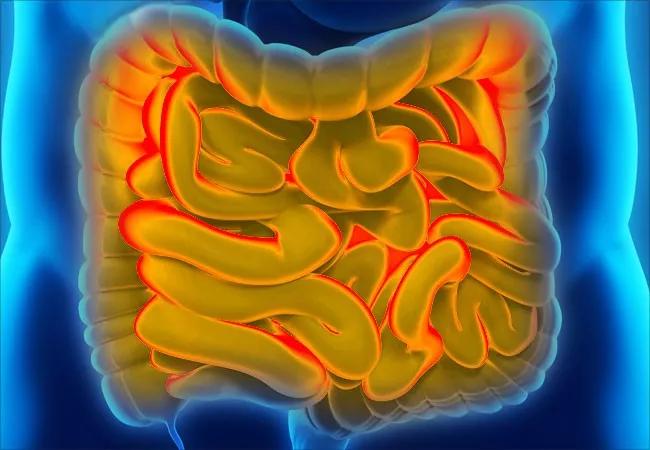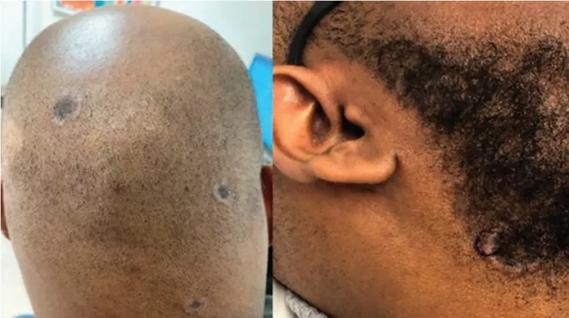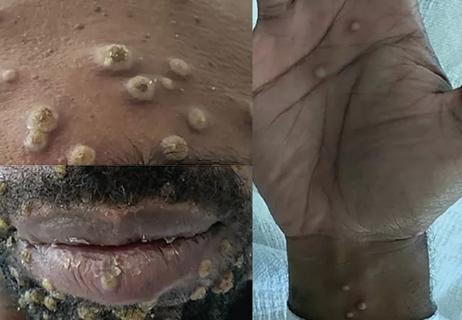Lesions frequently mistaken for infectious, inflammatory or traumatic vulvitis

A 37-year-old woman presented with recurring painful swelling and erythema of the vulva over the last year. Despite a series of negative vaginal cultures, she was prescribed multiple courses of antifungal and antibacterial treatments, while her symptoms continued to worsen. She had no other relevant medical history except for occasional diarrhea and abdominal cramping, which were attributed to irritable bowel syndrome.
Cleveland Clinic is a non-profit academic medical center. Advertising on our site helps support our mission. We do not endorse non-Cleveland Clinic products or services. Policy
On examination, she had symmetric edema and erythema of the vulva. Closer inspection revealed a nonulcerated, slightly friable nodule of approximately 4 mm on her right labium minus. A biopsy of this region demonstrated multiple noncaseating granulomas and mixed inflammatory infiltrates. An acid-fast stain for mycobacteria was negative. Vulvar skin ultrasonography demonstrated fistulas and increased dermal thickness with altered subcutaneous tissue. She was encouraged to undergo colonoscopy, which showed findings suggestive of Crohn disease.
Crohn disease primarily affects the gastrointestinal tract but is associated with extraintestinal manifestations (in the oral cavity, eyes, skin and joints) in up to 45% of patients.1
The most common mucocutaneous manifestations are granulomatous lesions that extend directly from the gastrointestinal tract, including perianal and peristomal skin tags, fistulas and perineal ulcerations. In most cases, the onset of cutaneous manifestations follows intestinal disease, but vulvar Crohn disease may precede gastrointestinal symptoms in approximately 25% of patients, with the average age at onset in the mid-30s.1
The pathogenesis of vulvar Crohn disease remains unclear. One theory involves production of immune complexes from the gastrointestinal tract and a possible T-lymphocyte-mediated type IV hypersensitivity reaction.2
The most commonly reported symptoms include pain, dyspareunia, pruritus and discharge.1 The classic findings, found in 50% of cases, include perianal and peristomal skin tags, fistulae, perineal ulcers, linear ulcers (resembling knife cuts), abscesses and fissures.3 Associated perianal fissures are also seen, in addition to vulvar edema.4
The diagnosis of vulvar Crohn disease should be considered in a patient who has vulvar pain, edema and ulcerations not otherwise explained, whether or not gastrointestinal Crohn disease is present. The diagnosis is established with clinical history and characteristic histopathology on biopsy. Multiple biopsies may be needed, and early endoscopy is recommended to establish the diagnosis. The histologic features include noncaseating and nonnecrotizing granulomatous dermatitis or vulvitis with occasional reports of eosinophilic infiltrates and necrobiosis.5,6 An imaging study such as ultrasonography is sometimes used to differentiate between a specific cutaneous manifestation of Crohn disease and its complications such as perianal fistula or abscess.
Clinical vulvar lesions are nonspecific, and those of Crohn disease are frequently mistaken for infectious, inflammatory, or traumatic vulvitis. Diagnostic biopsy for histologic analysis is warranted.
Please note: This is an abridged version of an article originally published in the Cleveland Clinic Journal of Medicine.

Consider secondary syphilis in the differential of annular lesions

Persistent rectal pain leads to diffuse pustules

Techniques are borrowed from rhinoplasty, malar augmentation and others

Two cases — both tremendously different in their level of complexity — illustrate the core principles of nasal reconstruction

Stress and immunosuppression can trigger reactivation of latent virus

Low-dose, monitored prescription therapy demonstrates success

Antioxidants, barrier-enhancing agents can improve thinning hair